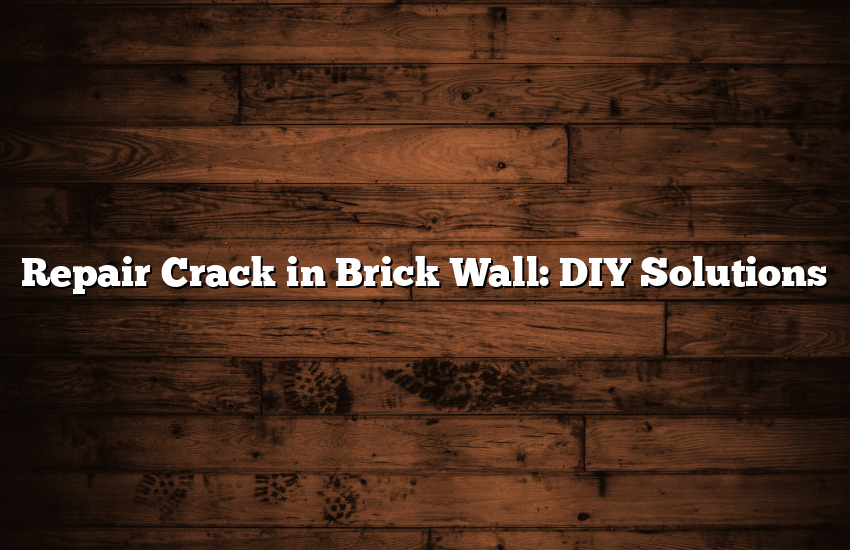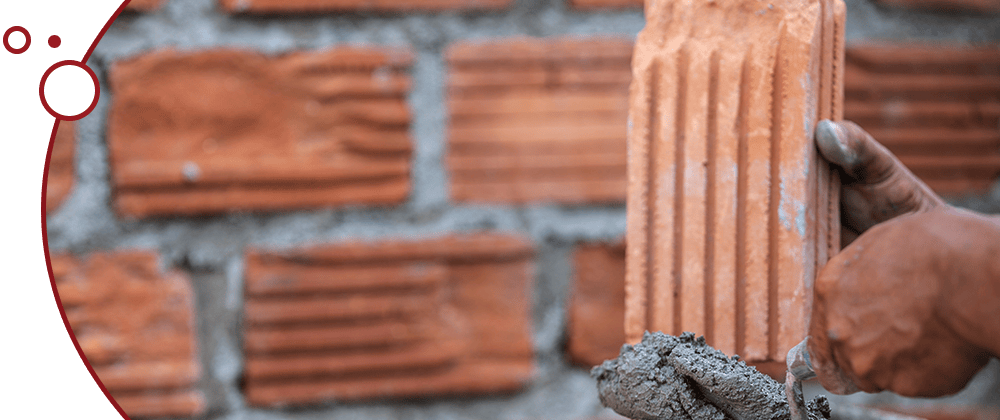
When it comes to home maintenance, one common issue many homeowners face is the need to repair a crack in a brick wall. These cracks can range from minor cosmetic concerns to significant structural damages. Understanding the causes and knowing the appropriate repair methods are crucial for maintaining the integrity and appearance of your brick walls. This comprehensive guide is dedicated to helping you navigate the process of repairing cracks in brick walls, ensuring that your home remains both structurally sound and aesthetically pleasing.
Table of Contents
Understanding Brick Wall Cracks
Brick walls are a durable and attractive aspect of many homes, but they are not immune to damage. Over time, various factors can lead to the development of cracks. Understanding these cracks is the first step in effective repair and maintenance.
Types of Cracks and Their Causes:
- Hairline Cracks: These are thin, superficial cracks that often result from minor causes like temperature fluctuations or slight settling of the building. Though they might not pose an immediate structural risk, they can widen over time and allow moisture to penetrate, potentially leading to more significant issues.
- Stair-Step Cracks: These cracks follow the mortar joints in a zigzag pattern resembling stair steps. They are often symptomatic of foundation issues, such as settling or shifting. These cracks are more concerning than hairline cracks and usually require a closer inspection to determine the underlying cause.
- Horizontal Cracks: These are serious indications of structural damage, often caused by pressure exerted on the wall from the soil outside, especially in basements. Horizontal cracks can compromise the integrity of the wall and require immediate attention.
Preparing for Repair
Safety and preparation are key to successful DIY repairs.
- Safety First: Always wear protective gear such as gloves and safety goggles to protect against dust and debris.
- Assess the Damage: Examine the crack closely to determine its depth and severity. This assessment will guide the choice of repair method and materials.
- Gather Materials: Essential tools include mortar mix, a chisel, a wire brush, a trowel, and a pointing tool. For larger cracks, you might need additional tools such as a drill and masonry bit for anchoring.
Repair Steps for Minor Cracks
Minor cracks, especially hairline cracks, can often be repaired with simple tools and techniques.
- Cleaning the Crack: Begin by using a wire brush to thoroughly clean out the crack, removing all loose material and debris. This ensures a good bonding surface for the new mortar.
- Applying Mortar: Choose a mortar mix that matches the existing mortar in color and composition. Mix it according to the manufacturer’s instructions and apply it into the crack using a trowel or pointing tool. Ensure that the mortar is packed tightly and reaches the full depth of the crack.
- Smoothing and Finishing: Once the crack is filled, smooth the surface with a trowel or jointer to ensure it is flush with the surrounding area. Allow the mortar to cure as recommended before any further cleaning or painting.
Dealing with Structural Cracks
Structural cracks, like stair-step or horizontal cracks, often signify more serious issues.
- Consult a Professional: It’s wise to get a structural engineer or a qualified contractor to assess these types of cracks. They can determine the root cause and the extent of any underlying structural issues.
- Understanding Underlying Issues: Addressing foundational problems, soil pressure, or other structural concerns is essential before repairing the crack itself.
- Professional Repairs: In many cases, structural repairs might involve more than just filling cracks. Solutions could include underpinning the foundation, installing structural supports, or extensive masonry work.
Preventive Measures
Prevention is always better than cure when it comes to brick wall maintenance.
- Regular Inspections: Periodically inspecting your brick walls for early signs of cracking can prevent larger issues. Look out for changes in existing cracks or the emergence of new ones.
- Addressing Moisture Issues: Ensure that gutters, downspouts, and drainage systems are functioning properly to prevent water accumulation near your foundation, which can lead to cracking.
- Foundation Care: Maintain a stable foundation to prevent cracks. This may involve managing the moisture content of the soil around your home and ensuring proper drainage.
Maintaining Your Brick Wall
Regular maintenance can extend the life of your brick wall and prevent the need for more extensive repairs.
- Regular Cleaning: Keep the wall free of dirt, moss, and other debris that can retain moisture and cause deterioration.
- Repointing: Periodically check the mortar joints and repair (repoint) them as needed to maintain the structural integrity of the wall.
When to Call a Professional
There are circumstances when professional help is necessary for repairing brick wall cracks.
- Large Cracks: Significant cracks, especially those that are widening or allowing water ingress, often need professional repair to ensure the stability and safety of the wall.
- Recurring Cracks: If cracks continue to appear or existing ones worsen, it’s a sign that there are more serious underlying issues that require professional diagnosis and repair.
- Unsure of Severity: If you’re uncertain about the severity or cause of a crack, it’s always safer to consult with a professional. They can provide guidance on the best course of action.
Conclusion:
Repairing a crack in a brick wall is more than just a cosmetic fix; it’s a vital part of maintaining your home’s structural integrity and aesthetic value. Identifying the type of crack and understanding its underlying cause is crucial for determining the most effective method to repair crack in brick wall. Regular maintenance, including cleaning and inspecting your brick walls, is essential in preventing small issues from escalating into major problems. When faced with larger or recurring cracks, or if you’re unsure about the severity of the damage, consulting a professional is advisable. They can provide expert advice and solutions, ensuring that the repair crack in brick wall is done safely and effectively. This approach not only improves your home’s appearance but also reinforces its safety and durability, ensuring that your brick walls remain in excellent condition for years to come.
FAQs:
Q: How often should I inspect my brick walls for cracks?
A: Regular inspections, ideally once a year, are important for early detection of potential issues, helping prevent major repairs.
Q: Are hairline cracks in brick walls a cause for concern?
A: While hairline cracks are often cosmetic, they can widen over time and allow moisture in, so it’s wise to monitor and address them.
Q: Can I repair a structural crack in a brick wall myself?
A: Structural cracks usually indicate deeper issues and often require professional assessment and repair for a safe, long-lasting solution.
Q: What causes cracks in brick walls?
A: Common causes include environmental factors like temperature changes, moisture, settling of the building, and structural stress.
Q: When should I call a professional for a cracked brick wall?
A: If the crack is large, recurring, or you’re uncertain about its severity, it’s best to seek professional advice for proper assessment and repair.


